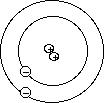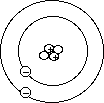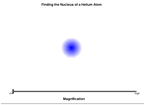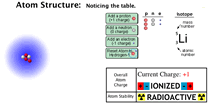CHAPTERS and LINKS
- RELEVANT BOOK SECTIONS
- FLASH MEDIA
- CC JAVA-BASED ACTIVITIES
- OTHER JAVA BASED APPLETS
Atomic Theory
- Handout: Condensed
Unit Notes
- Black Box Model
- Early Theories - 400 B.C.
- Common Greek theory was that all matter consisted of four "elements"
- earth, air, fire, and water.
- Democritus (460-360 BC)

- Alchemy, the process of changing base metals to gold, was the chief
form of experimentation from this time period until the the late 1600's.
- Robert Boyle (1622 - 1691)
- Antoine Lavoisier (1743 - 1797)
- Lab: Does
Mass Change During Chemical Reactions?
- Film: Lavoisier as the father of modern chemistry.
- Homework: Does Mass Change During Chemical
Reactions Lab Questions.
- Handout: Appleworks Spreadsheet Tutorial
- Joseph Proust (1754 - 1826)
- Demo: The Big Bunsen Burner
- Lab: Adjusting
the Bunsen Burner
- Lab: Making
water the right way. Put loudest pop ratio on the board when done.
- Handout: Good
Graphing.
- Homework: Making
Water the Right Way Lab Questions
- John Dalton (1768 - 1828)
- Handout: Dalton's
Atomic Theory
- Homework: Put the five components of Dalton's
atomic theory into your own words.

- William Crookes (1832 - 1919)
- Demo: Crude Crookes tube
- Demo: Actual Crookes tube
- Plum Pudding Model
- J.J. Thomson (1856-1940)
- Hard nucleus model
- Radioactivity

- Homework: Read the
article by Marie Curie on the state of radioactive study in 1904
and answer the questions at the end of the article.
- Ernest Rutherford (1871 - 1937)
- Bohr Model of the atom
- Niels Bohr (1885 - 1962)

- Spectroscopy and Bohr's Model
- Electromagnetic Radiation (EMR)
- Handout: Electromagnetic Waves
- Demo: Look through Diffraction Gratings.
- Demo: Why is the Sky blue
- Production of EMR
- Handout: Electron
Energy Levels
- Handout: Absorption and Emission of Energy by Electrons
- Demo: Diffraction gratings and high voltage emission
tubes.
- Homework: Electron
Jumping Worksheet; Read Light
Your Candy Article from the October '90 Edition of ChemMatters
- Demo: MRI scans of my brain.
- Emission and absorption spectroscopy
- Lab: Flame tests

- Homework: Read
"Space 1998" article and underline each time were EMR
is used in some sort of way to learn more about distant objects.
- James Chadwick (1891-1974)
- The Modern Atom (1950's - present)
- Handout: Modern
View of the Proton (Download this and open it in an image editing
program to print.)
- Demo: Atom in a Box Software

- Computer Lab: Explore
the modern atomic orbitals.
- Video Clip: Seeing
Atoms
- Symbolic representation of atoms
- Computer Lab: Atomic
Structure
- Homework: Atomic
Practice Sheet
- Handout: Review
Sheet
- Cool Link: An excellent more detailed and very readable history of the atom.










